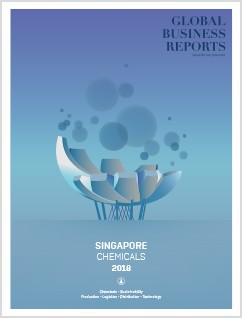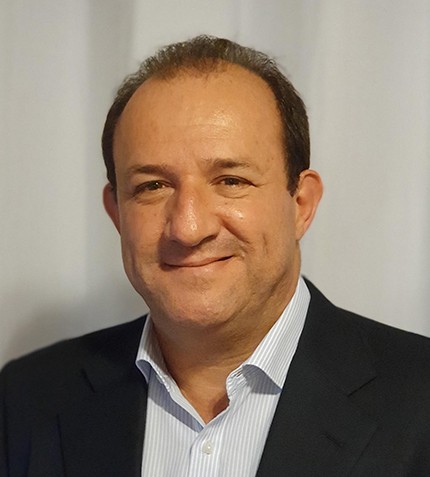
“Rather than seeing the market adoption of sustainable products as a challenge, I view it as a process of educating the entire value chain; a matter of technological proliferation […] With advanced solutions, it is not a question of if the market will adopt sustainable solutions, but when. It is all about educating both the businesses and the consumers, and globalization is quickening the process.”
RELATED PUBLICATION
ARTICLES FROM THIS PUBLICATION
- Singapore’s Chemicals Sector is Undergoing a Transformation
- For a Rainy Day: Singapore targets water self-sufficiency
- Manpower Constraints a Persistent Burden for Industry in Singapore
- Singapore’s Chemical Producers: Feeding Asia’s Appetite
- Distribution: Streamlining the Channels
- The Brave New World of Chemicals
- Prosperity or Penury – Singapore's Petrochemicals Industry Faces Challenges to Re-invent Itself
Paul Fong
SINGAPORE AND MALAYSIA COUNTRY MANAGER, DOW CHEMICAL
What do you foresee for the Materials Science Division following the DowDuPont merger?
The Materials Science Division will be a premier materials science solutions provider with a focus on three market-leading segments – Performance Materials and Coatings, Industrial Intermediates and Infrastructure, and Packaging and Specialty Plastics. We will have robust technology, as well as scale and competitive capabilities to enable truly differentiated materials science solutions for our customers. Singapore will remain a key regional hub for Dow, as a regional business headquarters for Packaging & Specialty Plastics, Coatings and Consumer Solutions businesses; as well as a regional R&D center due to the city-state’s talent pool and business strengths.
Can you tell us about some of the sustainable solutions Dow has recently developed?
Dow has been at the forefront of developing innovative and sustainable products, as demonstrated by the 754 patents we obtained in 2016. Some key examples include the ECOGROUND™ technology – one of 10 winners at the 2017 R&D 100 award. It is a waterborne acrylic binder for making rubberized running tracks, playgrounds and walkways that significantly mitigate exposure to materials with volatile organic compounds (VOC). Another key solution is the FORMASHIELD™ formaldehyde-abatement technology – an industry-first binder technology for latex paint that helps remove harmful formaldehyde from indoor air. A final example is a recently developed polyolefin-based coating to eliminate Bisphenol A (BPA) in the interior lining of tin cans. The CANVERA™ Technology won the 2017 Kirkpatrick Chemical Engineering Achievement Award and 2017 Edison Award for Innovation.
What is the main challenge in convincing the market to adopt more sustainable products?
Rather than seeing the market adoption of sustainable products as a challenge, I view it as a process of educating the entire value chain; a matter of technological proliferation. For example, the ECOGROUND™ technology has taken off all around China since its invention about four years ago with over 600 projects. Moreover, we have just installed the first ECOGROUND™ running track, basketball court and playground in a school in Singapore - the first in Asia Pacific outside Greater China. However, we are in for the long haul although we are optimistic that market perception for a sustainable future will continue to take shape, though it may take some time. With advanced solutions, it is not a question of if the market will adopt sustainable solutions, but when. It is all about educating both the businesses and the consumers, and globalization is quickening the process.
Dow has set ambitious goals towards sustainability for 2025. Can you tell us about these initiatives?
As part of our 2025 Sustainability Goals, we have set seven goals, which includes Advancing a Circular Economy, Safe Chemistry for a Sustainable Planet, and Delivering Breakthrough Innovations. For example, in Malaysia we have partnered with the Malaysia Plastic Manufacturing Association to create a plastic recycling awareness campaign in schools. In addition, we believe that the alignment with governments on sustainability issues is key in helping us achieve our targets. For example, we are seeing China become a key driver in reducing VOC [volatile organic compounds] content in the atmosphere, which is in line with our plans for sustainability.
What are your thoughts on the impending carbon tax set for 2019?
In Singapore, we will not be excessively impacted by the carbon tax since we are already running on a low carbon footprint. The carbon tax has been implemented in a bid to encourage the mitigation of emissions, which is a good move to maintain our competitiveness in the region. Globally, Dow is a strong proponent of carbon emissions reduction exemplified by our status as the Official Carbon Partner of the International Olympic Committee (IOC).
What is your vision for Dow in Singapore over the next three to five years?
I would like to see Dow influence a greater adoption of technology and advanced solutions in the market. Moreover, we want to strengthen and build partnerships with educational institutions like the National University of Singapore (NUS) to foster entrepreneurship and application-based projects in STEM-related subjects. I believe with the help of the government, the industry and education institutions can work together to create products and solutions to better humanity’s exposure to healthy and sustainable products.












